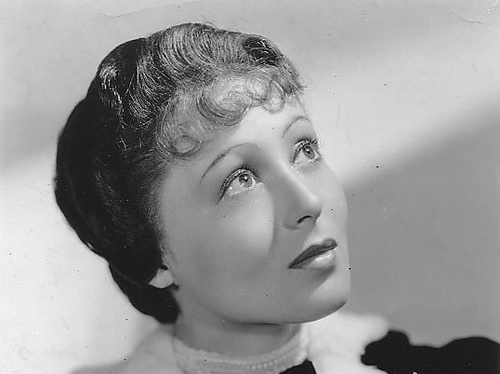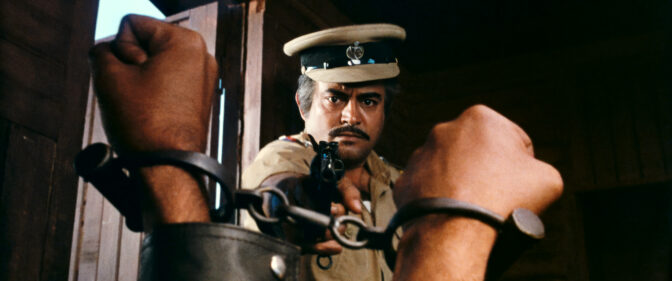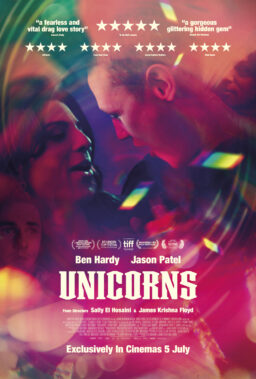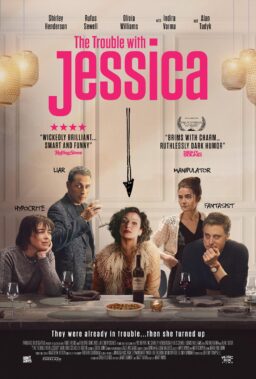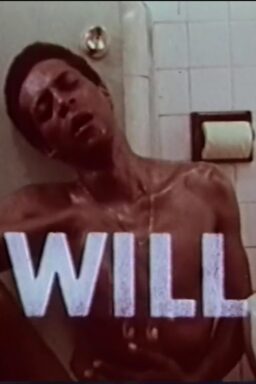It was an unusually long life, 104 years until it ended today, but Luise Rainer was best known for having won back-to-back Academy Awards for Best Actress in the late 1930s, for “The Great Ziegfeld” in 1936 and “The Good Earth” in 1937. She herself seemed stunned by that unexplained generosity. No one at her home studio of MGM was pushing for her either time. Quite the contrary. And she had bested world-class competition.
In 1936, she was up against Irene Dunne in “Theodora Goes Wild” and Carole Lombard in “My Man Godfrey,” both classic screwball comedies. Dunne and Lombard never won Oscars, but their highly worthy comedy performances were overlooked, it seems clear, for a single telephone scene that Rainer has in “The Great Ziegfeld” where her character Anna Held tearfully congratulates her ex-husband Florenz Ziegfeld (William Powell) on his marriage to Billie Burke (Myrna Loy).
This phone scene lasts close to four minutes, and it should be remembered that “The Great Ziegfeld” won Best Picture and was one of MGM’s most expensive productions ever. Rainer might have gotten away with just that one win as a vote of confidence, especially if she had won in the newly created Best Supporting Actress category instead, for her Anna Held has limited footage beyond the opportunity of that phone aria, where Rainer coos, “Flo…Flo…” throughout.
Rainer’s dazed, exaggerated work might seem unclassifiably weird today if you don’t know anything about her background. She was born in Germany to an upper class Jewish family and raised in Vienna, and as a young girl Rainer joined Max Reinhardt’s theater school and company. At that time, all the young German actresses were inspired by the example of Elisabeth Bergner, an obscure name now but a hugely influential actress in her time who patented an adorable gamine style that was only made palatable by her technique and her steely control over her effects. If you see Bergner in a film like “Dreaming Lips” (1937), you will see the style that Rainer is trying for in “The Great Ziegfeld” and the other films she made at MGM in the 1930s, but the stylized Bergner shapes every moment and holds it to a strict standard of realism whereas Rainer indulges herself emotionally in the most reckless way.
Which is maybe why voters were impressed by her more passive work as O-Lan, a long-suffering Chinese peasant in “The Good Earth,” for which she won another Oscar. This time, fatally, Rainer triumphed over Greta Garbo in “Camille,” Barbara Stanwyck in “Stella Dallas” and Irene Dunne again in “The Awful Truth.” However modestly touching Rainer is in “The Good Earth,” and she is touching if you can get past her yellow face make-up, it seems insane that she won over Garbo and Stanwyck, neither of whom ever won Oscars and both of whom were doing career-best work. In the photo from that night when she won again, Rainer looks perplexed. She is wearing pajamas because she was rousted out of bed; she had been fighting with her husband, the playwright Clifford Odets. It’s as if she knows that she will never live this down, and she was right about that.
Hollywood soon reacted against her double win, and she made only a few more movies. She gave maybe her best screen performance opposite Spencer Tracy in “Big City” (1937), where director Frank Borzage patiently and kindly scaled down her mannerisms until she seemed like an exquisitely beautiful but recognizable human being. But in “The Toy Wife” (1938), where she played a character nicknamed “Frou Frou,” Rainer was so over-the-top that she seemed to tip all the way over physically like a ship on a stormy sea in reaction to every turn of the plot. There were two more films at MGM, and then she told studio head Louis B. Mayer that she had nothing more to give. “We made you, and we will break you,” she remembered him telling her. Rainer did only one film in the 1940s, “Hostages” (1943), and then she disappeared, working occasionally on stage but otherwise in seeming retirement.
For decades, Rainer became a kind of Oscar trivia question, but then she re-emerged as a beautiful old lady in the 1990s as one of the bluntest interviewees in the 1992 MGM documentary “When the Lion Roars,” and then as an elderly aristocrat in “The Gambler” (1997), a movie version of a Dostoyevsky story, where her popping eyes and frou-frou mannerisms were as outrageous as ever. Seduced by the roulette wheel, she keeps betting on “Zero!…Zero!” repeating that word as she once repeated “Flo…Flo” on the telephone. Rainer was an excessive actress, larger than life, probably more suited to the Viennese and German stage of her youth than anywhere else. But her centenarian sparkle and her Oscar wins assure her an unusual place in film history.

